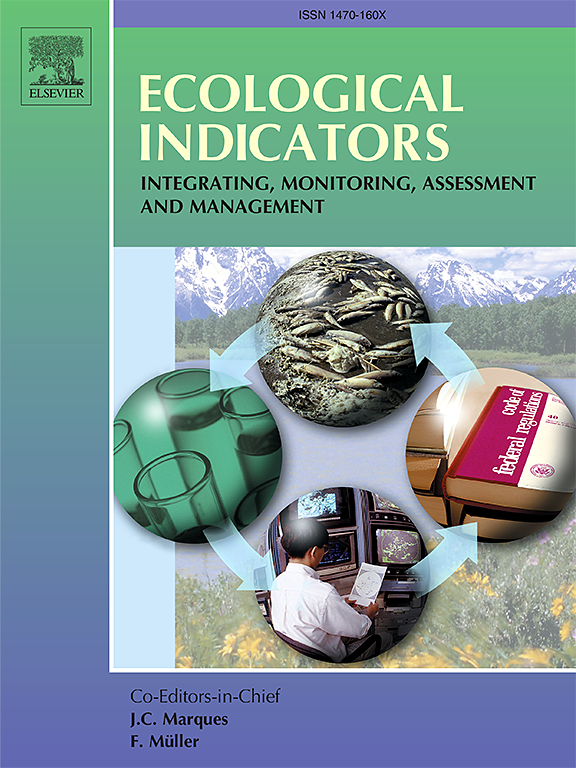Road network expansion and landscape dynamics in the Chaohu Lake wetland: A 20-year analysis
IF 7
2区 环境科学与生态学
Q1 ENVIRONMENTAL SCIENCES
引用次数: 0
Abstract
Transportation networks are crucial for social and economic development and information exchange. Although China’ has made substantial investments in transportation infrastructure to, foster progress in these areas, these investments have also led to adverse ecological consequences, such as disruption of natural landscapes and destruction of animal habitats. This study investigates the impact of transportation network expansion on landscape patterns in the Chaohu Lake wetland over 20 years. Using Landsat remote sensing imagery, kernel density estimation and landscape index analysis were employed to quantify changes in landscape composition and configuration. Spatial autocorrelation analysis was conducted to examine the spatiotemporal influence of the transportation network and topography on landscape structure and ecology. Additionally, the integrated valuation of ecosystem services and trade-offs model was used to assess the relationship between road construction and habitat quality changes in the Chaohu Lake area. The results indicate a decline in farmland and an increase in construction land, accompanied by an increase in road-network density, particularly in the northwestern and eastern regions over the past 20 years. Road expansion contributed to landscape fragmentation and increased landscape diversity. Between 2012 and 2023, habitat quality in the Chaohu Lake water body remained stable, while urban areas experienced a decline. This study highlights the ecological consequences of transportation infrastructure development and underscores the need to explore mitigation strategies, such as ecological restoration, to minimize the negative impacts of road-network construction on the environment.
求助全文
约1分钟内获得全文
求助全文
来源期刊

Ecological Indicators
环境科学-环境科学
CiteScore
11.80
自引率
8.70%
发文量
1163
审稿时长
78 days
期刊介绍:
The ultimate aim of Ecological Indicators is to integrate the monitoring and assessment of ecological and environmental indicators with management practices. The journal provides a forum for the discussion of the applied scientific development and review of traditional indicator approaches as well as for theoretical, modelling and quantitative applications such as index development. Research into the following areas will be published.
• All aspects of ecological and environmental indicators and indices.
• New indicators, and new approaches and methods for indicator development, testing and use.
• Development and modelling of indices, e.g. application of indicator suites across multiple scales and resources.
• Analysis and research of resource, system- and scale-specific indicators.
• Methods for integration of social and other valuation metrics for the production of scientifically rigorous and politically-relevant assessments using indicator-based monitoring and assessment programs.
• How research indicators can be transformed into direct application for management purposes.
• Broader assessment objectives and methods, e.g. biodiversity, biological integrity, and sustainability, through the use of indicators.
• Resource-specific indicators such as landscape, agroecosystems, forests, wetlands, etc.
 求助内容:
求助内容: 应助结果提醒方式:
应助结果提醒方式:


